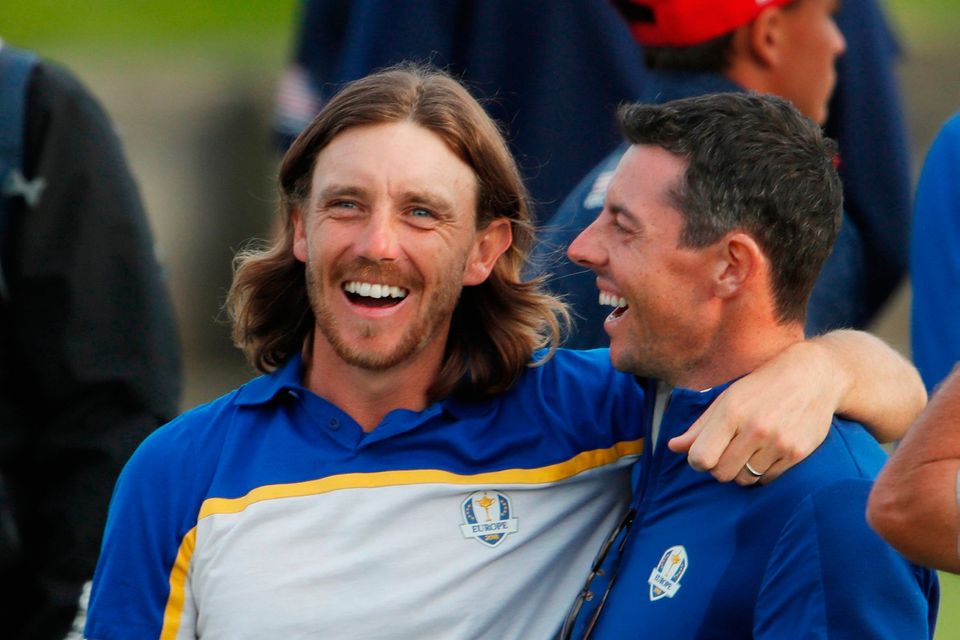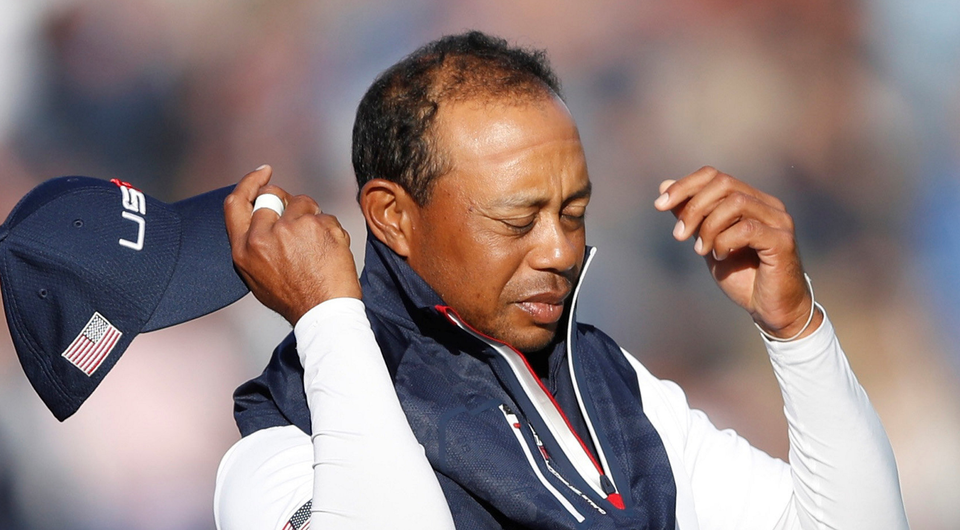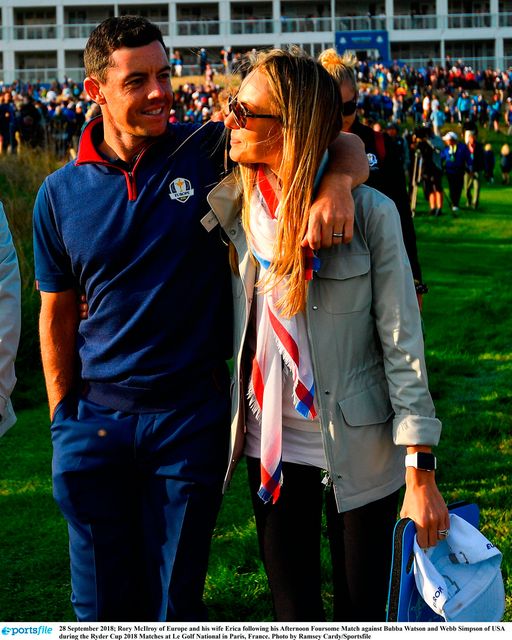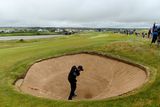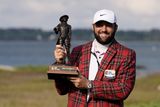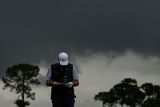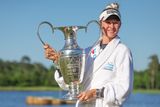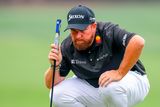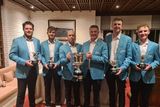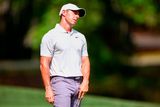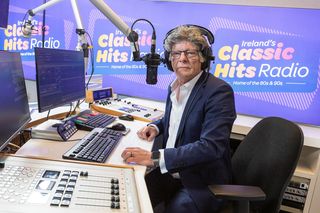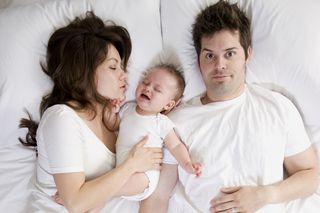Paul Kimmage's Postcard From Paris: It's a funny old game

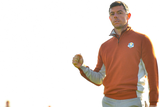
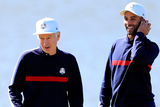
Rick: "If that plane leaves the ground and you're not with him, you'll regret it. Maybe not today, maybe not tomorrow, but soon and for the rest of your life." Ilsa: "But what about us?" Rick: "We'll always have Paris"
(Casablanca)
Doug Ferguson was 55 years, four months and 19 days old when he realised he was in Paris for the first time. Seven hours had passed since his flight had touched down from Atlanta; he had taken a taxi to the hotel at Saint-Quentin-en-Yvelines, dropped a suitcase to his room and headed straight to Le Golf National to write a story on Tiger Woods.
He was tired. It's his 20th year as a golf writer with the Associated Press and his tank was running low after another long season of criss-crossing the globe. "But that's our life," he says. "Where are you going? The Ryder Cup. What will you see? Fairways and greens . . . It's terrible. We may as well be in Wichita, Kansas."
It was a colleague, Paul Newberry, who suggested dinner in Paris. They returned to the hotel, ordered a cab and had almost reached the Seine when the regret started to weigh on him: some of these buildings were just astonishing; if only he had stayed on an extra week.
"I know this sounds cheesy," he said, "but I do not want to leave France without at least seeing the Eiffel Tower." Newberry laughed and pointed out the window.
"You mean that."
And he looked up and there it was.
1
A huge man with grey fleck hair, shovels for hands and tanned leather for skin collected us at the airport. The month was February 1984 and I had come to Paris with my brother Raphael to spend a season at ACBB, the most famous amateur cycling club in France. We sat in the back of a Peugeot 505 and gazed in wonder at the sights and sounds as 'Babel', the team masseur, drove us to the small apartment in the Paris suburb of Vincennes that would serve as home for the next eight months.
The flat was on the fifth floor of an old grey building on the Avenue de la Republique. It had an old black and white television, a phone that accepted just incoming calls and a hole-in-the-ground toilet that doubled as a shower. We learned a lot about racing in France that summer and a lot about French culture . . . Coluche, Johnny Halliday, Alain Delon, Serge Gainsbourg, Patrick Poivre d'Arvor, Francoise Hardy, Jean-Paul Belmondo, Michel Drucker, Catherine Deneuve, Jane Birkin, Michel Platini, Brigitte Bardot, Jacques Dutronc, Gerard Depardieu, Jean Tigana, Eddy Mitchell, Bernard Hinault, Jean-Claude Killy, France Gall, Laurent Fignon, Princess Stephanie and Paris Match, Yannick Noah and L'Equipe, Francois Mitterrand and Le Canard Enchaine . . . But mostly we learned to squat.
The team base in Boulogne-Billancourt was a 13-minute walk from the Parc des Princes, a 20-minute walk from Roland Garros, and a 90-minute walk from the Champs Elysees and the Golf de St Cloud. So it was quite a summer. France beat Spain to the European Championship, Bernard Langer beat Nick Faldo to the French Open, Laurent Fignon beat Bernard Hinault to the Tour de France, and Ivan Lendl went head to head with John McEnroe at Rolland Garros.
A cartoon published in L'Equipe on the eve of the game has always stayed with me. It portrayed a brash and confident McEnroe pointing a gun across the net at a perspiring and petrified Lendl. It was the Czech's fourth appearance in a Grand Slam final and he had yet to register a win, and he had been crushed four times by McEnroe that season.
I would have laughed that morning if you had told me McEnroe would lose, and would have thought you were deranged if you had suggested I would remind him of it 34 years later. I was a 22-year-old plumber from Dublin. I knew nothing about journalism, little about tennis, and the only thing I knew about golf was that McEnroe detested it.
"Golf is not a sport - it's an artistic exercise like ballet," he'd said. "You can be a fat slob and still play golf."
But here we were, two fat slobs, walking the fairways of Le Golf National.
2
Doug Ferguson has many fine attributes as a reporter and a writer, but the best club in his bag is his empathy and relationship with the players. That doesn't come cheaply. First to arrive in the media centre each morning and last to leave, when he's not pounding his laptop on deadline, you'll find him out walking the fairways or working the locker room.
That makes the Ryder Cup tough.
There were only 24 players involved and he would have less access to them than at any other tournament. Journalists were barred from the clubhouse and forbidden from the driving range and the only platform to ask questions were the limited (an average of ten questions per player) and frustrating (900 journalists fighting for the mic) press conferences.
The first, a double-header with the two captains, Jim Furyk and Thomas Bjorn on Monday, set the tone for the week:
Question: "Do you intend to play all 12 (players) on the first day if you can?"
Furyk: "What's your strategy on that, Thomas?"
Bjorn: "You know that's . . . you'll have to wait and see."
Furyk: "I think you'll have to wait and see. I thought Thomas was very clear."
It was going to be a long week for Doug, but some of us had Samuel L Jackson.
3
Vincent: "Do you know what the funniest thing about Europe is?"
Jules: "What?"
Vincent: "It's the little differences. I mean they've got the same shit over there that they've got over here, but just there it's a little different."
Jules: "Example?"
Vincent: "Alright, well you can walk into a movie theatre in Amsterdam and buy a beer - and I don't mean just like no paper cup, I'm talking about a glass of beer. And in Paris you can buy a beer in McDonalds. And you know what they call a Quarter-Pounder with Cheese in Paris?
Jules (puzzled): "They don't call it a Quarter-Pounder with Cheese?"
Vincent: "No man, they've got the metric system. They wouldn't know what the fuck a Quarter-Pounder is!"
Jules: "Then what do they call it?"
In the closet: Samuel L Jackson, above in the 'The Man', is known for hard-men roles like Jules in 'Pulp Fiction' and 'The 51st State', but the opinionated father-of-one is also secretly fond of fashion
Vincent: "They call it a Royale with cheese."
Jules (smiles): "Royale with cheese."
Vincent: "That's right."
Jules: "What do they call a Big Mac?"
Vincent: "A Big Mac's a Big Mac, but they call it Le Big Mac."
Jules (laughs): "Le Big-a-Mac."
Vincent (John Travolta) and Jules (Samuel L Jackson) driving through the streets of Los Angeles in a scene from Pulp Fiction
4
There are five minutes to go to the Celebrity Challenge Match on Tuesday when Samuel L Jackson ambles to the first tee with a well-nourished stomach and a mega-watt smile. He's playing with Kurt Russell, another star of the silver screen, against Brian O'Driscoll and a French comedian Danny Boon, and you can imagine the fun that ensues . . . And what if we did?
"Do you know the funniest thing about golf in France, Kurt?"
"What?"
"The little differences. It's the same game over here as we play at home but over here it's the little differences."
"Give me an example, Sam?"
"Do you know what they call a bunker over here?"
"No idea."
"Le bun-care."
"Hah!"
"Do you know what they call the fairway?"
"No."
"Le fairway. Isn't that good?"
"That is good, Sam."
"The rough is 'le rough' and the green is 'le green'
"Got it. So basically you just put a 'le' in front of everything."
"Mostly, but not always. Take the backswing.
"It's not 'le backswing'?"
"No, over here they call it 'le swing en arriere'."
"That's crazy man!"
"Isn't it. What about the golf course?"
"Hit me."
"La par-coor de golf."
"Cool."
"A divot?"
"Go on."
"Une motte de gazon."
"Fuucck!"
"How about les fers?"
"No idea."
"Those are your irons, man."
"Right."
"And a birdie is un oiselet."
"Right."
"Did you notice that store behind the first tee? Did you see what it's called?"
"No."
"Le Boutique du Trou numero un."
"Man, that sounds so good."
"Doesn't it? Wouldn't it be great to make love to a woman who whispered that shit in your ear? 'Allez, encore Samuuuuel. Le boo-teek-a-do-true-new-mero-uhhhhhhhh.'"
"Steady man. I'm getting hot just listening to you."
As Jackson is finishing the lesson, John McEnroe, playing with James Blake, has hit a fine looking approach shot to the elevated green on four.
'How close is that?" he asks a spectator.
"Twenty feet," the man replies.
"TWENTY FEET! TWENTY FEET!"
He slams his club on the ground.
5
It was the worst loss of my life, a devastating defeat: sometimes it still keeps me up at nights. It's even tough for me now to do the commentary at the French - I'll often have one or two days when I literally feel sick to my stomach just at being there and thinking about that match. Thinking of what I threw away, and how different my life would've have been if I'd won.
John McEnroe 'Serious'
6
Fifteen years ago, an aspiring young film director called Julien Faraut was sifting through the archives at the French national sport and training institute (INSEP) in Vincennes when he happened upon a treasure trove of never-seen-before footage of John McEnroe at the French Open in 1984.
It was taken by Gil de Kermadec, a former National Director of Tennis, who had spent five years at Roland Garros with a camera pointed incessantly, and obsessively, at the American with the objective of making the perfect instructional film. 'Roland Garros avec John McEnroe' was completed in 1985 and captured the fluidity, movement and grace that set the American apart.
But Faraut saw something else in the 25 reels of film de Kermadec had discarded.
His film L'Empire de la Perfection (In the Realm of Perfection) took three years to complete and captures the sheer agony of Being John McEnroe in that summer of '84. In a memorable scene, we are informed that the actor Tom Hulce prepared for his manic portrayal of Mozart in Amadeus by studying the madness of King John playing tennis.
"Can you show me the mark please? Can you show me the mark? Why not? Why can't you show me the mark? You can't see your own shoelaces!"
(Cue Mozart's Piano concerto number two as a line-judge approaches and points vaguely at the clay.)
"What! There's no mark there!"
(Cue the Concerto again and McEnroe moving magnificently around the court.)
Then Faraut intercuts another McEnroe tantrum with some clips from Amadeus.
Emperor Joseph: "Who is he, this Mozart?"
Antonio Salieri: "He's remarkable."
Count Orsini: "He's an unprincipled, spoiled, conceited brat."
Mozart: "Forgive me Majesty. I am a vulgar man. But I assure you, my music is not."
Antonio Salieri: "He creates music for the Gods."
The film concludes with a breakdown of McEnroe's implosion against Lendl in a final he should never have lost. In the final scene we find him moments after the game, distraught on his chair with his head in his hands, and then exploding with rage at the TV crew who have run across to capture the moment.
Now we're walking towards the fourth tee and I've stung him with it again . . .
"Have you seen it?"
"Seen what?" he replies.
"That new French film about '84."
"No, I've heard about it. Have you?"
"Yeah, there was a screening last night in Versailles. I was hoping you'd be there."
'No, I was flying. I just got here," he says.
"Show me the mark!" a French spectator roars when we reach the tee. McEnroe smiles and shakes his head. He'll always have Paris.
7
Tiger Woods has also had Paris. The first time he played here was in 1994 when he lined up with Todd Dempsey, Allen Doyle and John Harris at the World Amateur Team Championship. It was his last time to fly economy class.
"That was back when they still had smoking sections at the very back of the plane for international flights," he told Doug Ferguson in 2009. "I was in the row right in front of the smoking section. I asked the flight attendant if I could lay down on the floor. The rules were a little different back then."
He flies TWA (Tiger Woods Airlines) now.
After his 80th victory, in Atlanta, last Sunday - his first for five years on the PGA Tour - the story of his extraordinary comeback has been the talk for most of the season, and all of the Ryder Cup.
On Monday, the bulk of the questions put to Furyk and Bjorn were Tiger questions. On Tuesday, when he stepped into the media centre, a journalist tossed his press card into the air: "I don't know if anybody in the media has said thank you, but for all of us that earn our living in the golf business, a big thank you for what you did on Sunday."
Phil Mickelson answered five Tiger-related questions and for the players on both sides there was no escape. To:
Rory McIlroy: You obviously had a close-up view of Tiger on Sunday?
Brooks Koepka: What is Tiger like in the team room as a player compared with a vice-captain?
Tommy Fleetwood: You tweeted the other day that Tiger's performance was the greatest comeback in sport.
Tony Finau: What is it like to be a team-mate of Tiger's?
Francesco Molinari: You were playing with Tiger in the final round at Carnoustie. Would you like to face Tiger again this week? What are your impressions of when you do play with him.
Webb Simpson: You were 12 when Tiger won in Augusta. What is it like playing a Ryder Cup with him?
Henrik Stenson: What did you make of Tiger Woods' performance in the Tour Championship on Sunday?
Justin Thomas: When you first started to get to know Tiger as, like a friend, what was that like to be like, oh my God, I'm texting Tiger Woods. Can you describe the evolution of that?
And sat there listening with a growing sense of dread.
It's called Tiger fatigue.
Tiger Woods. Photo: Reuters
Doug Ferguson survived it first-time around and has watched it growing all year.
"I'll never forget (what happened) at Honda," he says. "He had been okay at Torrey Pines, missed the cut in Los Angeles, and he gets to Honda (the Honda Classic in Florida last March), and he was always flirting, always there, but he's still four shots behind. I don't think he ever got within two (shots) of the lead at any point.
"So I'm leaving the next morning and there's USA Today in the newsrack and all I see is the headline, bigger-than-life on the front of the sports page: 'Tiger impresses'. And then, in the small-print underneath it: 'Woods finishes 12th in Honda classic as Justin Thomas wins play-off'. And that's when I first came to the conclusion that this guy is bigger now than when he was good!
"So I'm glad he won on Sunday because it just gave some credibility to how well he has been playing. But it has been really, really, hard. That USA Today thing really stands out for me. But let me say this too . . . go back to 2000, the opening round (of the Open) at St Andrews and he shoots 67 in the morning. Then Ernie comes around in the afternoon and shoots 66, leads by one.
"And I think the first question Ernie got was: 'What did you think when you saw Tiger's score?' Another day we were in Tampa. It was a Thursday and I looked up and there's Charles Howell, one off the lead. And it's struck me: 'These guys never had to go through what Charlie did, which is to not go through an entire interview without somebody saying 'What do you think about Tiger? What do you think about Tiger?'
"So what you are talking about now is what I saw back in the early-to-middle 2000s, and it did, it drove a lot of guys crazy. But it's not Tiger's fault."
8
Forty-three per cent of the fans lining the ropes this week have been French. Not all of them understand what they are watching. On Tuesday, a man from Chartres is watching from the hill to the right of the par-five 14th when Rory McIlroy booms a driver from the tee.
"Ils tap de la, et ils arrives la! Putain! C'est incroyable!" he says.
"You don't play?" I observe.
"Non, malheureusement," he replies.
"But you're here for the week?
"Non, juste aujour'hui."
In '84, when Langer won the French Open at St-Cloud, the first French finisher was Bernard Pascassio in 45th, and it would take another 15 years before Jean Van de Velde would become the first Frenchman to play in the Ryder Cup.
They've had two more since - Thomas Levet (2004) and Victor Dubuisson (2014) - but with only two players in the top 100 of the world rankings, it is a source of some regret that the only French involved in the first Ryder Cup to be played here are porteur d'eau or domestiques - Raphael Jacquelin and Gregory Havret are driving team buggies.
The man from Chartres is not impressed. "Les Francais son bon a rien," he scoffs, as McIlroy hits his second to the green.
"What about football?" I ask. 'Didn't you just win the World Cup?"
"Ahh, oui," he replies. "But did you see how badly we started?"
9
SAINT-QUENTIN-EN-YVELINES, France (AP) Jim Furyk has spent four days watching his team play loose and confident, two key ingredients he hopes will allow the Americans to end 25 years without winning the Ryder Cup away from home.
He can only hope that's what he sees when the shots at Le Golf National really count.
"What would make me nervous?" Furyk said on the eve of the matches. "If I showed up in the morning and guys had a look on their face that made me nervous. I don't usually see that with this group."
Flags were raised, anthems were played and the partisan cheers began late Thursday afternoon to signal the end of a hype and anticipation of a Ryder Cup featuring two of the strongest teams the US and Europe have presented at the same time.
Now it's time to play.
Doug Ferguson
10
Things you don't see at other Major tournaments . . .
(07:30) Rory in the darkness, alone on the putting green.
(07:45) Rory on the driving range without Michael Bannon.
(07:46) Rory looking pensive.
(07:50) Rory without a hat.
(08:00) Rory's wife Erica and Ian Poulter's wife Katie walking to the first linking arms.
28 September 2018; Rory McIlroy of Europe and his wife Erica following his Afternoon Foursome Match against Bubba Watson and Webb Simpson of USA during the Ryder Cup 2018 Matches at Le Golf National in Paris, France. Photo by Ramsey Cardy/Sportsfile
(08:10) Rory pausing to watch the giant screen as Tony Finau hits the opening tee shot.
(08:11) Rory pausing to watch Brooks Koepka.
(08:12) Rory pausing to watch Justin Rose.
(08:15) Rory being serenaded as he leaves the range. "Olé, Olé, Olé, Ro-ray, Ro-ray."
(O8:16) Rory waiting for Thorbjorn Olesen.
(08:17) Rory hugging Tommy Fleetwood.
(08: 16) Rory being hugged by Stenson, Garcia, Poulter and Bjorn.
(08:17) Rory hugging Rickie Fowler.
(08:19) Rory tapping Dustin Johnson on the arm.
(08:24) Rory with an iron in his hands.
(08:25) Rory looking relieved when his tee shot finds the fairway.
You could write a book on it.
11
Much has been written on the art of captaincy, and on Friday afternoon, when the first act of the Ryder Cup had been completed, we were sure Thomas Bjorn had got it wrong. He had played second fiddle to Furyk all week in the media centre and had been trounced by the American the night before at the opening ceremony.
Furyk was presidential; Bjorn was perfunctory, his speech littered with generality and cliché. Pride. Faith. Del boy French. His face needing some soap and a shave.
And whose bright idea was it to introduce the teams in alphabetical order? Brilliant for Furyk: DeChambeau, then Finau, then Fowler, then Johnson, then Koepka, then Mickelson, then Reed, then Simpson, then Spieth, then Thomas, and then the coup de grace - a roar for Tiger Woods that registered six on the Richter scale.
How were Europe to follow that when McIlroy, their marquee player, was buried in the middle of the pack? And Bjorn's opening pairings - Rose and Rahm, McIlroy and Olesen, Casey and Hatton, and Molinari and Fleetwood did not inspire confidence. But on Friday evening when he strolled into the media centre with a 5-3 lead he was being hailed as the new Paul McGinley.
'Bjorn Again: Europe strike back as hit-and-miss McIlroy justifies his captain's faith.'
'Team Blue turns the screw on Americans.'
'Bjorn's gamble to stick with McIlroy pays off.'
'Old dogs provide the inspiration for Bjorn in foursomes backlash.'
It's a funny old game.
